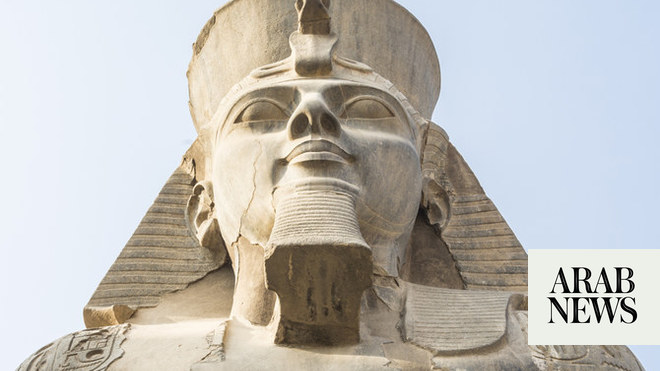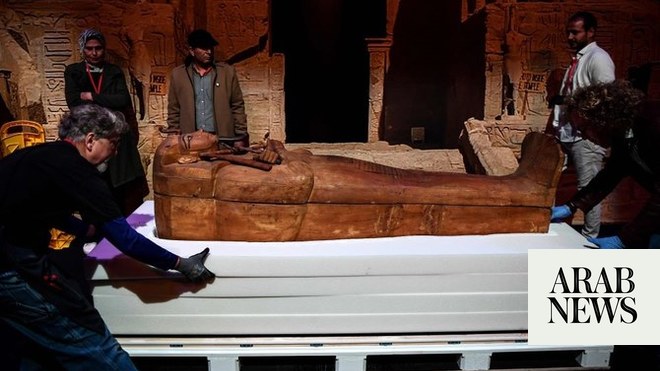
The 11-meter-high statue was originally placed in Aswan’s Abu Simbel temple more than 3,000 years ago so that the sun would be perpendicular to its face on Feb. 22 and Oct. 22 every year
CAIRO: King Ramses II will have to wait a while longer for the sun to shine this year, as thick cloud cover prevented it bathing his statue with light in a usually twice-yearly marvel believed to mark both his birth and coronation as Egyptian pharaoh.
The 11-meter-high statue, which weighs 80 tons, was originally placed in Aswan’s Abu Simbel temple more than 3,000 years ago so that the sun would be perpendicular to its face on Feb. 22 and Oct. 22 every year.
It was moved to the lobby of the Grand Egyptian Museum in Giza in 2018 and placed to receive the same light show, albeit a day earlier than usual. However, on Tuesday visitors were disappointed as poor weather meant it remained in shadow.
For centuries, the sun’s rays rose above the waters of Lake Nasser, crept into the ancient temple and extended 60 meters to illuminate a passage between four giant statues including that of the Egyptian pharaoh, bathing it in light for 20 minutes.
There are two theories as to why. The first is that the temple was designed so that the sun would mark the start and end of the farming season; the second that the two illumination days fell on Ramses II’s birthday and his coronation.
The temple area was flooded following the construction of the High Dam and formation of Lake Nasser, prompting a $40 million international campaign in the 1960s to save the monuments of Abu Simbel and Nubia.
The campaign involved moving the temple in sections. Ramses II’s statue was moved four times before being installed at the museum, which is 65 meters above river level.
It is believed that the Abu Simbel complex was built between 1265 B.C. and 1244 B.C. It was rediscovered in 1817 by Giovanni Pelonzi, an Italian Egyptologist.
The sun phenomenon was noticed in 1874 by British novelist and Egyptologist Amelia Edwards, who went on to publish her findings in “A Thousand Miles Up the Nile.”












